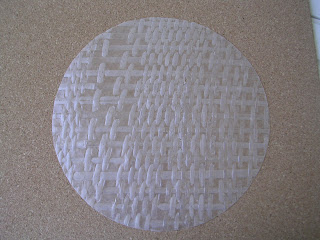
Spring rolls are enhanced by a variety of different dipping sauces. I can never decide which I like the best, so I use them all and let them blend together on my plate for even greater variety of tastes. I prefer using peanut butter that contains nothing but freshly ground roasted peanuts. Many Publix stores make this type of peanut butter and keep it near the Deli Department.
These recipes are adapted from the same article by Robin Asbell in Veggie Life, Spring 2005, as the Spring Rolls below.
These recipes are adapted from the same article by Robin Asbell in Veggie Life, Spring 2005, as the Spring Rolls below.
Peanut Sauce
1/4 cup fresh ground peanut butter
2 tablespoons honey
2 tablespoons fresh lime juice
3 tablespoons water
1/4 teaspoon crushed red pepper
Place all ingredients in a container you can use with a hand held blender and buzz all together until smooth.
Serve at once or cover and refrigerate until serving time. Let the sauce return to room temperature before using it if you have kept it refrigerated. The sauce will keep several days in a glass jar with a tight cover in the refrigerator.
2 tablespoons honey
2 tablespoons fresh lime juice
3 tablespoons water
1/4 teaspoon crushed red pepper
Place all ingredients in a container you can use with a hand held blender and buzz all together until smooth.
Serve at once or cover and refrigerate until serving time. Let the sauce return to room temperature before using it if you have kept it refrigerated. The sauce will keep several days in a glass jar with a tight cover in the refrigerator.
Jerry's Favorite
This is Jerry's own sauce that he created at Chinese restaurants that serve those fried noodles while you wait for your meal to arrive.
1/4 cup Plum Sauce
3 tablespoons Chinese mustard
Combine the Plum Sauce and mustard in a small bowl and serve.
3 tablespoons Chinese mustard
Combine the Plum Sauce and mustard in a small bowl and serve.
Spicy Sauce
1/4 cup Tamari
1/4 cup rice vinegar
1 teaspoon chili paste
1/2 teaspoon Asian sesame oil
2 garlic cloves, pressed
Combine all ingredients in a small bowl and let stand for an hour before serving. This sauce will also keep for a few days in the refrigerator in a covered container.
1/4 cup Tamari
1/4 cup rice vinegar
1 teaspoon chili paste
1/2 teaspoon Asian sesame oil
2 garlic cloves, pressed
Combine all ingredients in a small bowl and let stand for an hour before serving. This sauce will also keep for a few days in the refrigerator in a covered container.









